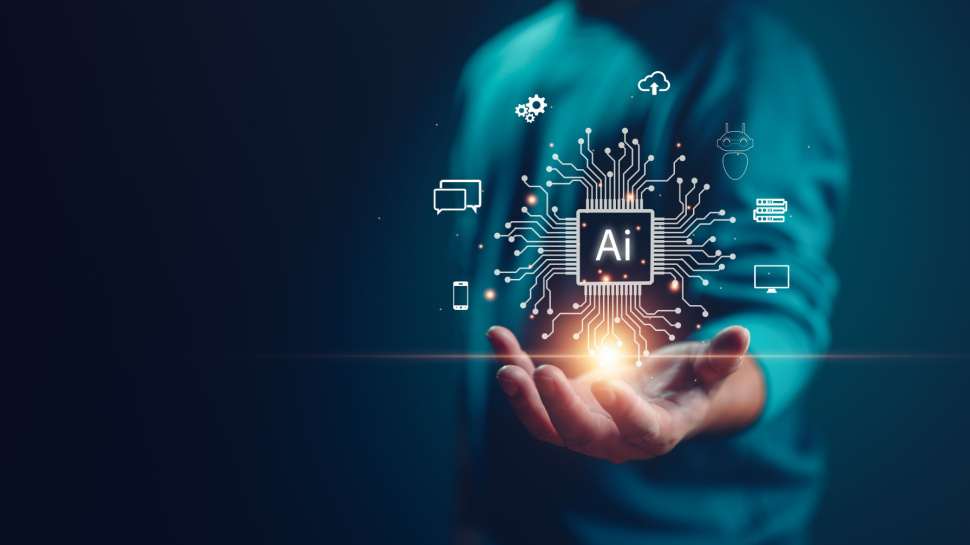"People need to know AI is reliable, secure, and respects boundaries" - Dropbox VP tells us why AI should be your "proactive partner"
We speak to Dropbox's Manik Singh around AI, collaboration, trust, and more

How has your experience working at major tech companies shaped your approach to building AI-powered tools that solve real-world problems?
At Dropbox, our mission is to design a more enlightened way of working — tools that “just work.” That principle guides how we build AI: not to add complexity, but to quietly remove friction so people can focus on what matters most.
Earlier in my career, at companies like Meta, I saw how essential that simplicity is at scale. The most effective systems aren’t the ones people notice, they’re the ones that make everything around them work better.
That’s the approach we’ve taken with Dropbox Dash. We started by asking: where are people getting stuck? Whether it’s tracking down files, juggling tools, or repeating work, those daily blockers add up. Our goal is to solve them in the background, so teams can stay in flow. When AI is doing its job, the experience feels effortless.
AI is evolving rapidly and transforming the workplace. What do you think the next big breakthrough will be when it comes to transforming how teams collaborate and communicate?
The next breakthrough won’t come from another chat interface or faster summary—it’ll come from systems that understand how people and teams actually work together.
Most AI tools today focus on individuals. But work is inherently collaborative and often messy. What we need are tools that build a knowledge graph not just of what you’re working on, but how your team works: what decisions are open, what context matters and how work moves across people and projects.
This shift, from static inputs to dynamic orchestration, will unlock smarter collaboration. AI will know when to surface context, what version matters, who to loop in and where work is getting stuck. It won’t just help individuals move faster but it’ll help teams work better, together.
That’s what will define the next wave of AI: not just understanding content but understanding coordination.
Sign up to the TechRadar Pro newsletter to get all the top news, opinion, features and guidance your business needs to succeed!
Information overload is becoming a major challenge in workplaces, with employees juggling multiple apps, platforms and tools. How can AI help businesses address this issue effectively?
Information overload isn’t just a volume problem—it’s a fragmentation problem. Files, chats, notes and tasks live across disconnected tools. The result isn’t just lost time, it’s lost alignment.
AI can help by acting as a connective layer across that sprawl: surfacing what matters based on what your team is working on, not just what you last touched.
And because most work is collaborative, this isn’t just about helping individuals, it’s about reducing the overhead of getting everyone on the same page. When AI understands the broader picture, it can keep teams aligned, even when their tools and timelines aren’t.
What challenges do businesses face when trying to integrate AI into workplace tools in a way that feels seamless and genuinely helpful for employees?
One of the biggest challenges is time to value. Too many AI tools require users to start from scratch — set up rules, feed in data, build trust. That’s a heavy lift for something meant to save time.
We’re thinking about this differently. What if AI could offer value on day one — because it already understands how your team works? Our tools are designed to do just that. By building on a shared knowledge graph, it helps new users find what they need, get up to speed, and start contributing immediately.
But seamless integration isn’t just about speed, it’s also about trust. People need to know that AI is reliable, secure, and respects boundaries. That’s why trust isn’t just a privacy setting, it’s a design principle. When people believe the system is on their side, they’ll use it. And when they do, the value compounds.
As AI becomes more integrated into our daily workflows, concerns around data privacy and ethical use are growing. How should companies approach these issues to build trust with users while continuing to innovate?
Trust is foundational. People need to know what AI is doing, what data it can access and how that data is used. But trust isn’t just about policies—it’s about product behaviour.
That means giving users real control, avoiding data practices that feel extractive, and being transparent about how systems work. Our AI principles focus on privacy-first design, clear user intent and never training models on customer data. With our AI tools, those values show up in every decision we make, from content governance to admin controls.
It’s also essential to ensure that AI algorithms are fair and unbiased. We need to be vigilant about identifying and mitigating any potential biases that could lead to discriminatory outcomes.
Employees should also have control over their data and how it’s used. Finally, we need to establish clear ethical guidelines for AI development and deployment. These guidelines should address issues such as data privacy, algorithmic bias, and the potential impact of AI on employment. By prioritising transparency, ethical considerations, and user control, we can build trust and ensure that AI is used for good.
Looking ahead, what do you see as the biggest opportunity for AI to improve workplace productivity over the next five years?
The biggest opportunity isn’t just automation—it’s increasing decision velocity. The future of productivity isn’t about completing more tasks faster. It’s about reaching clarity faster, surfacing the right context at the right time, and reducing the cost of misalignment.
AI will increasingly act as a proactive partner, understanding what you’re working on, who you’re working with and what decisions are still in flight. AI-powered tools can also help teams move with confidence and focus.
When tools understand the work—not just the words—they stop getting in the way and start accelerating what’s possible.

Mike Moore is Deputy Editor at TechRadar Pro. He has worked as a B2B and B2C tech journalist for nearly a decade, including at one of the UK's leading national newspapers and fellow Future title ITProPortal, and when he's not keeping track of all the latest enterprise and workplace trends, can most likely be found watching, following or taking part in some kind of sport.
You must confirm your public display name before commenting
Please logout and then login again, you will then be prompted to enter your display name.